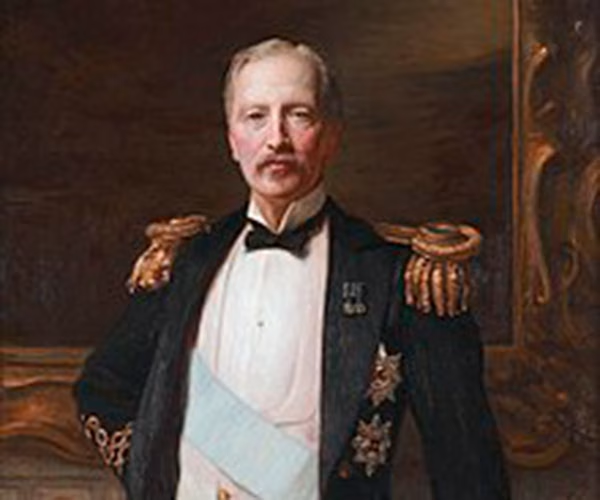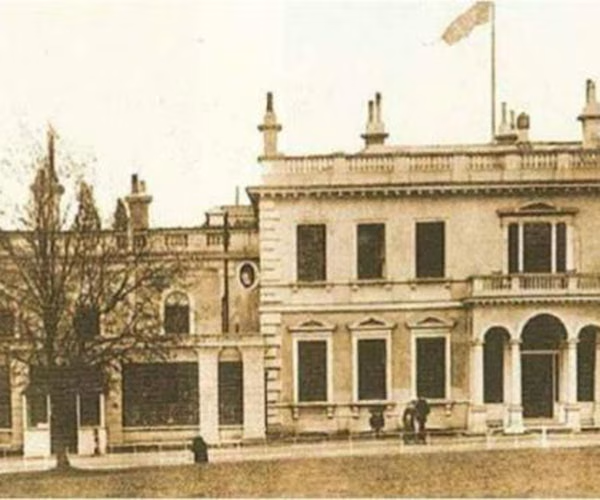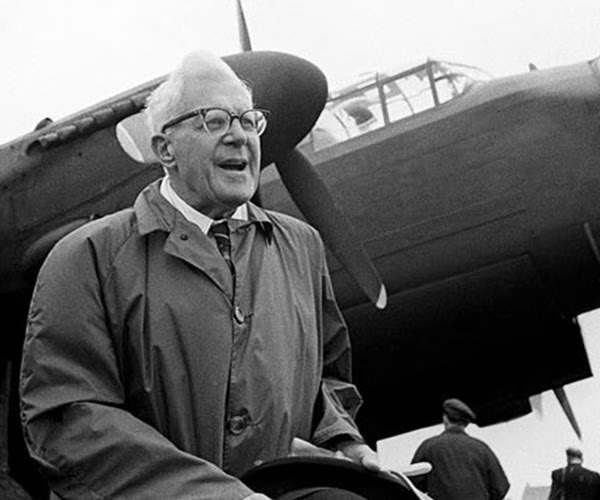One of the two lounges
1947
For more than 100 years, Burhill has been a gathering place for golfers of all abilities, united by a love for the game. The rich history is woven with stories of members, competitions, and a tradition of sporting excellence that continues to thrive today.

Nestled in the heart of Surrey, Burhill Golf Club is one of England’s most historic and prestigious golfing venues. Established in 1907 on the scenic Burhill Estate, the club has been at the centre of the game for over a century, blending heritage with modern excellence. The Old Course, designed by the celebrated golf architect Willie Park Jr., quickly earned a reputation for its beauty and challenge, attracting members and professional players alike. Over the decades, Burhill has grown to offer two outstanding 18-hole courses – the Old and the New – while preserving the timeless character of its Georgian clubhouse, a Grade II listed building dating back to 1726. Today, Burhill stands as a proud guardian of golfing tradition, combining its rich past with first-class facilities that continue to inspire generations of golfers.
1726
Steeped in history and elegance, Burhill Golf Club proudly stands on the ancestral estate of the Guinness family. Built in 1726, the grand Burhill House was once the cherished home of the family behind the world’s most famous stout. Today, that heritage lives on in the charm of our clubhouse, the warmth of our hospitality, and even in the perfect pour of Guinness you can enjoy at our bar. At Burhill, tradition and excellence come together — a lasting tribute to a remarkable legacy.

1947

1954

1965


Design of the
At the beginning of June 1940 the Clubhouse was requisitioned by the Ministry of Aircraft Production for use by the design department. The next month a workforce of 200, headed by Barnes Wallis, moved into the premises. The Governments decision to transfer this highly specialised group of technicians and engineers to Burhill was based on the well-founded premise that Brooklands might be targeted by German bombers, a prediction that was fully justified when, two months later, direct hits severely damaged the factory.
Step back in time and explore the story of Burhill Golf Club. Our timeline brings to life the events, moments, and people that have shaped the club, offering a fascinating glimpse into how Burhill has grown and evolved into the club it is today.




















Originally there were two and a half courses at Burhill, the North (now Old), a short boggy 9-hole where the driving range is located and the South Course – designed by Harry Colt and located on the area mainly occupied by the New Course today.
Despite earlier warnings, the land intended for the South Course was subject to flooding, but it was not until after the lease papers had been signed and work had started that it became clear much of the ground was unusable for a golf course. Following lengthy negotiations Lord Iveagh agreed to sign a lease for an additional 50 acres of dry pastureland in return for additional rental income.
Once completed in 1930 the South Course measured approximately 5700 yards (bogey 57). The first 9 holes (2600) yards were described as being ‘on the flat side and rather dull’, but the layout and heavy bunkering meant that it was a tough test even for the best players in the area.


Burhill’s very own
Buried deep in the Burhill Estate is our famous Ice House.
“An ice house, or icehouse, is a building used to store ice throughout the year, commonly used prior to the invention of the refrigerator. Some were underground chambers, usually man-made, close to natural sources of winter ice such as freshwater lakes, but many were buildings with various types of insulation.
During the winter, ice and snow would be cut from lakes or rivers, taken into the ice house, and packed with insulation (often straw or sawdust). It would remain frozen for many months, often until the following winter, and could be used as a source of ice during the summer months. The main application of the ice was the storage of foods, but it could also be used simply to cool drinks, or in the preparation of ice cream and sorbet desserts. During the heyday of the ice trade, a typical commercial ice house would store 2,700 tonnes (3,000 short tons) of ice in a 30-by-100-foot (9 by 30 m) and 14-metre-high (45 ft) building”

A small but proud symbol of heritage, craftsmanship, and renewal. Once weathered by time and the elements, this unique structure has been brought back to life by Burhill’s recent restoration efforts, preserving an important piece of the club’s character.
The shelter’s signature feature, its intricately thatched roof, showcases the artistry of the master thatcher, whose work blends traditional skill with enduring beauty. Adorning the roof is the distinctive pheasant symbol, a hallmark of the thatcher’s craft. More than a decorative touch, the pheasant represents the pride, precision, and generations of knowledge passed down through the hands of expert craftsmen.
Over the years, the Burhill Golf Club logo has evolved—reflecting not only our rich heritage but also our modern vision. From its earliest design, inspired by the club’s historic estate roots, to today’s refined and contemporary emblem, each version of the logo tells a part of our story.



